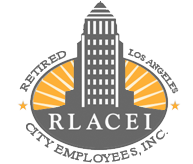
LACERS BOARD UPDATE
By Michael R. Wilkinson, LACERS Commissioner
Email: MikeWilkinson4LACERS@gmail.com
The LACERS real estate consultant, Townsend, reported strong returns for the period ending Dec. 31, 2021. The returns were: 7.72 percent for the quarter, 22.43 percent for the year, 8.47 percent for three years, 8.20 percent for five years, 9.14 percent for ten years and 6.21 percent since inception. While only the one-year return was greater than the benchmark, the investments made since the 2014 are all outperforming.
As you know, LACERS invests to provide for the needs of the pension plan and the health, vision, and dental plans. There is no one all-weather investment that provides all our needs, so the plan diversifies its investments across those that perform differently in different time periods, seeking investments that are uncorrelated with each other. However, in some bear markets, particularly when all asset classes are declining, diversification may not be as effective.
An important asset class for LACERS is real estate. In 2018, the LACERS Board increased the target allocation to real estate from 5 percent to 7 percent as part of its overall plan to achieve a long-term return of 7 percent on the total portfolio.
Real estate investments help to diversify the overall LACERS portfolio by geography. LACERS invests across the country and has a small number of international properties as well. Within the LACERS real estate portfolio, investments are also diversified by property type: apartment, office, industrial, retail, and hotels. LACERS is careful not to be too heavily weighted on any one property type or geographic area so that if one real estate segment hits a downturn, the portfolio could be supported by other investments that were not suffering losses.
LACERS’ largest real estate concentration is in core properties, which are those in prime locations, characterized by full occupancy and high-quality tenants, and producing good and stable income. Since core properties are in high demand, they are relatively expensive and produce lower returns than non-core properties. LACERS’ target is 60 percent core and 40 percent non-core. Non-core properties sometimes need work and carry higher risk. However, for this additional risk there is the potential for higher returns. This is the old saw that there is no “free lunch” in investing. If you seek higher returns, you must accept higher risk. The goal is to get the right combination that provides a reasonable return without risking too much.












